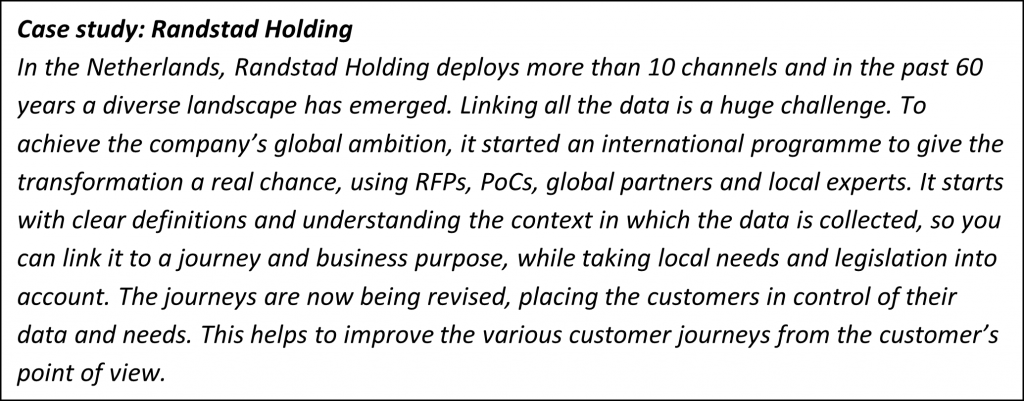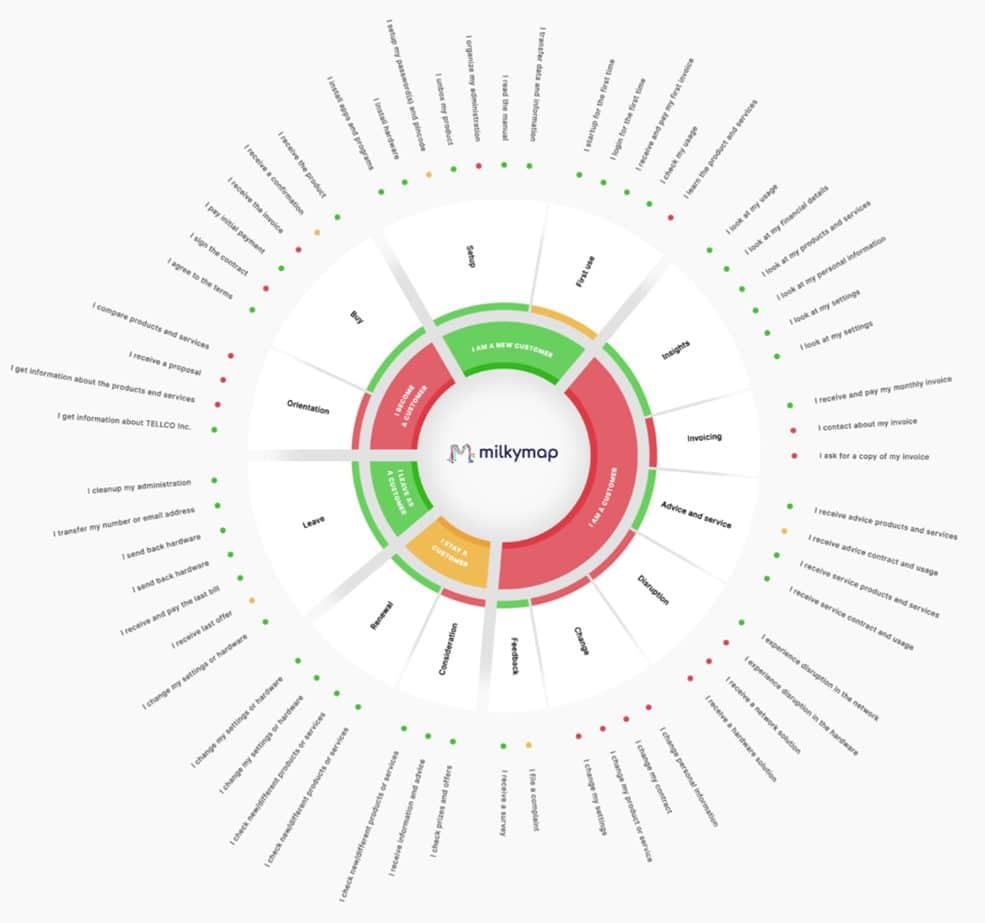Although organisations are increasingly data-driven, CJA often remains a challenge
Trust in data is undeniably high: Data-Driven Marketing Research shows that 82% of organisations believe data should drive channel optimisation. In addition, investments in data-driven marketing within the sector have contributed most to more and/or better customer data (in 44% of the organisations), more and/or better leads (in 42%) and more insight into customers (in 39%). Even though the sector increasingly has its data well organised, organisations still encounter challenges in with CJA. The three most common challenges when using CJA are:
- Integrating data from different sources and linking it to a unique person
- Commercial control of the data
- A lack of expertise and/or sufficient resources
- Integrating data from different sources and linking it to a unique person
One of the challenges with CJA, of course, is to organise the data. How do we connect data from different channels; how do we collect the data we need; how can we recognise the customer in different channels, and are we allowed to use all data so that we can identify customer journeys. For the owned media/first-party data area, these questions are fairly easy to answer. For journeys with paid/earned media, this is of course also desirable, although it is not always possible because you always need permission to use the data. It is also possible that media partners are unwilling to share data or that you simply don’t have the technical capacity to connect identifiers to each other. Despite the technical workarounds available, we are still seeing more and more organisations failing to integrate their data from different sources. You can read more about this in the publications on ITP/ETP.

- Commercial control of the data
Another challenge is the lack of knowledge and commitment at board level. A customer journey, by definition, crosses different channels and channel owners. After all, although customers don’t think in terms of channels, organisations often do. If it is just a question of sharing and measuring data, then this is often enough. However, when different interests are attached to KPIs, other forces come into play. For instance, what do you do in a call centre – where people are expected to keep calls to a certain length – if there are opportunities for providing customers with commercial offers? Do you offer the customer extra services or do you restrict the call length to the set time? It’s a difficult trade-off. The important thing here is to have good support from the top of your organisation and to form clearly defined teams involving all parties concerned so you can properly evaluate all the consequences.

- A lack of expertise and/or sufficient resources
All too often, working on change still has to be done on top of your day job. There’s little time left for optimisation and innovation. In the case of innovations, there’s sometimes a lack of knowledge and expertise too. When it comes to determining value and thinking from the customer’s point of view, companies that are further along their path to maturity are quicker to pull together and therefore make faster progress.

Three steps towards starting to use Customer Journey Analytics
If you have organised your Journey Mapping properly and you have identified the different phases of the journey and the corresponding metrics, then you are already on the right track. How do you start using CJA? We have set it out in three steps:
- Categorisation is a must
Traditionally, data is examined and interpreted retrospectively. Although fine for analysis, this method falls short if you want to be able to act upon the analysis right away. For example, if you want to use customer behaviour as a basis on which to adjust content in real-time, then you need real-time data that has been categorised in advance. This means that all key activities the customer might perform need to be tagged in advance, for example:
<ID> performs <activity> on <channel> for <product or service>. An activity could therefore be described as follows: Josephine has a user question in the chat about televisions.
This lets us plot an activity directly onto a customer journey so we can link a follow-up action to it.

Figure: Example of the various categories of a customer journey. Source: Milkymap
- Start small, test and learn from your mistakes
A common mistake is believing everything has to be done at once. Journey management is an iterative process. Take two steps forward and then take a step back. If you manage your expectations well beforehand, there is nothing wrong with trying and making mistakes. Fortunately, we have been seeing a growth in the popularity of small sprints and shorter projects for years.
- Talk to each other and show understanding for your colleagues with different expertise
This seems obvious; however, we cannot emphasise its importance enough. Years ago, we were with an organisation in America and every morning we saw a small cross-departmental team spend 15 minutes at the coffee machine discussing the marketing effects and actions that were needed. Is the message in channel 1 correct? Will a marketing campaign impact service channel 2? Marketing, Sales, Service, Product, Legal and Online all gathered here to set out agreements according to the latest insights. This is a very simple way you can use to transcend the boundaries of the departments within your organisation.
Summary
Customer Journey Analytics shows that if we apply it correctly, we can get a lot more from data. Although not all data is relevant or available, it is important if we are to understand the increasingly complex customer journeys so we can influence customer experience. If you have already taken the first steps in Customer Journey Management, then CJA is the logical next step.
Ook interessant

DDMA Barometer 2025 – Consumentenaandacht raakt op: van digitale overload naar betekenisvolle marketing

AI in marketing: van praten naar doen – hoe je écht aan de slag gaat




